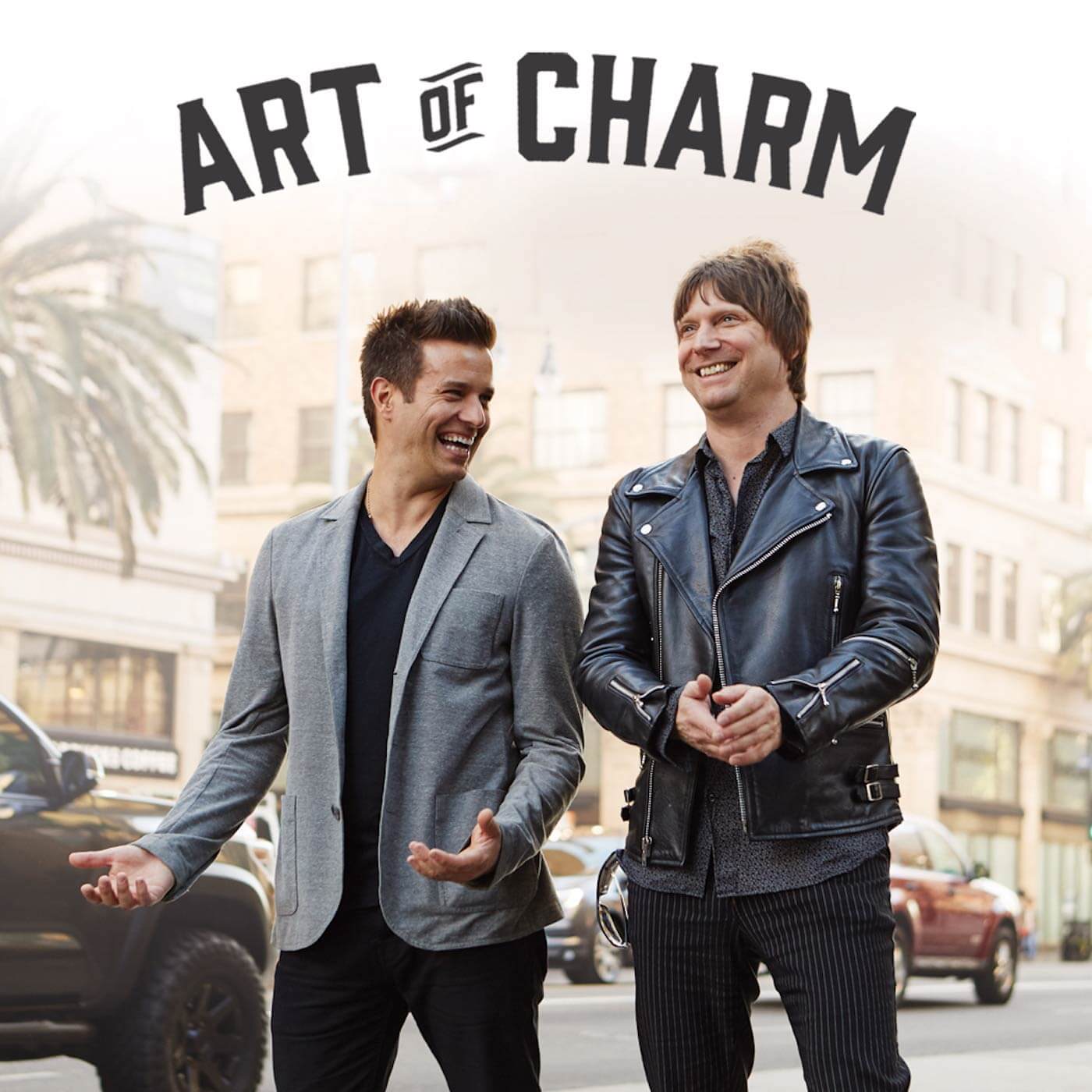About This Episode
We all rely on 3 levels of connection when it comes to meeting people — but what are they, do we have to follow them in order, and how do we know what level we’re on with someone?
WHAT TO LISTEN FOR
- What are the 3 levels of connection and why is it important to follow them in order?
- Is it possible to form a deeper bond with a stranger in 45 minutes than the bond you have with your closest friend?
- What mistake do many of us make when first getting to know someone and why can it cause a connection to fall apart in seconds?
- How do we encourage vulnerability from other people so that we can strengthen our relationships?
- What types of questions should you ask in order to build strong connections?
- What is the primary driving force behind building connections and being vulnerable?
- How does comfort with shame and embarrassment build deeper connections?
Building great connections with new people can seem like navigating a maze if you don’t understand how connections are built in the first place. When you’re in a maze you can’t see where you started, you can’t see where the exit is, and every turn you take looks like the last one.
Once you understand the 3 levels of connection, however, you go from being stuck in the maze to looking down on it. Connection is directly related to vulnerability, and when you’re comfortable being vulnerable at each level you’re able to confidently guide the other person through the maze as you learn more about each other and develop a solid bond.
PLEASE SCROLL DOWN FOR FULL SHOW NOTES AND FEATURED RESOURCES
Share your vulnerabilities, victories, and questions in our 17,000-member private Facebook group at theartofcharm.com/challenge. This is a unique opportunity where everyone — both men and women — celebrate your accountability on the way to becoming the best version of yourself. Register today here!
https://theartofcharm.com/challenge/
A WORD FROM OUR SPONSORS
Problems hiring? ZipRecruiter is the highest-rated hiring site in America. Try for FREE at ziprecruiter.com/charm where ZipRecruiter will send your job to 100+ of the web’s leading job boards.
Calm includes guided meditations and Sleep Stories to help you reduce anxiety, lower stress and sleep better. AoC listeners can get 25% off a Calm Premium subscription at calm.com/charm. Get started today at calm.com/charm.
Great protection. Fair prices. Easy to use. SimpliSafe is the right way to protect your home. Go today to SimpliSafe.com/AOC to get your system today!
MORE ABOUT THIS SHOW
Think of the 3 levels of connection like a roadmap. If you were in the passenger seat of a car and you were telling the driver how to get from point A to point B, where would you start?
Ideally, you’d find your current location, point A, on the map and start giving directions from there (or pull out your smartphone because this isn’t 1999, type the destination in, and hit enter, but stick with me). If you tried to give directions starting from point B, or somewhere in between points A and B, you wouldn’t go anywhere, the driver would look at you confused, and she might just get out of the car and let you figure it out on your own.
YOU HAD ONE JOB!
Anyway, the same goes for the 3 levels of connection.
If you’re going to start building a connection you must start at the beginning: the first level.
Light Disclosure
“In order for vulnerability to happen there’s gonna have to be some risk involved,” Johnny states, “and that’s what’s scary about all this. So, the first level that we’re discussing is lighthearted, fun, amusing anecdotes about yourself and the world around you.”
Think of an embarrassing story from when you were younger.
Maybe you were running a mile in PE (physical education) and tripped in front of the whole class and everyone laughed at you. Maybe you tried to cut your hair and you didn’t realize how bad it was until you walked into class the next day and everybody laughed at you. Or maybe on your driver’s license exam you hit a parked car because you forgot which was the brake pedal… and everybody laughed at you.
The point is if you have an embarrassing story from your past that you can laugh at now, you can consider that light disclosure.
The person you’re telling the story to might not be able to relate to the exact events, but he will be able to relate to the emotional bids, such as being embarrassed, or caught off guard, or feeling humiliated in front of his classmates.
You can be vulnerable in telling a story like that, people can connect with you via the emotions conveyed, and there’s little risk because of the amount of time that’s passed and you’ve moved on (hopefully).
AJ put it simply, “We’re pulling a piece of our past that shows a little imperfection.”
And before we move onto the second level, keep in mind that these stories are not about the facts (location, color of the chalkboard, number of students that laughed their faces off, etc), but the emotions you felt in the story (embarrassment, frustration, anger, sadness, humiliation, etc).
We connect through emotions, not facts.
Medium Disclosure
Johnny goes on to preface level 2, “Once both people have conveyed those stories, and are feeling matched, you are now at a point where if you want to go further then both parties can feel good about it. And what comes next is level 2, medium disclosure, which is beliefs, opinions, feelings, and ideas about yourself and the world around you.”
Johnny also puts that last thought another way, “How you see things coming together, and that has been colored and put together through your sheer experiences in life. Which means that mine are going to be different than yours.”
What are some examples of medium disclosure?
Well, if light disclosure had to do with something from your past that you can laugh at, medium disclosure is going to be something more related to your present self. Maybe even something in your recent past (the last few years) that still has a hold on you or left a significant impact on how you perceive yourself and the world around you.
AJ gives the example of imposter syndrome and feeling like he was a failure. Maybe you went through a bad breakup and it crushed your self-confidence. Maybe you got let go from a job you loved and it made you question your knowledge and abilities and possibly your career choice.
The examples above are in a higher risk category than level 1 because someone could use your vulnerability against you, either to manipulate you or just hurt you.
In addition, because two people are going to see the world through different lenses, sharing something in the medium disclosure level can invite judgment from the other person as their perception of you and the world is different.
Heavy Disclosure
“Heavy disclosure is the understandable human weakness, “Johnny continues, “Your fears and insecurities about yourself and the world around you. Now, that is a big one because most people don’t want to have to admit they have fears and insecurities because that leaves them feeling vulnerable which leads them to feel unsafe.”
AJ later chimes in, “Now, when we hear heavy disclosure, many of us are not anticipating trust, respect, kindness, or affection. We’re expecting the worst, like ‘Oh my God now I’m going to be so judged, so vulnerable that this person can’t possibly like or love me.’ But in these moments when we progress through the light, we are now dropping our guard, moving to medium [disclosure] where we’re starting to explain our worldview and share that, and then we move to heavy [disclosure] – now we’re actually on the road to real connection!”
Heavy disclosure is the final level in this roadmap for connection, but it doesn’t mean you have to get there with everyone you meet. Heavy disclosure should be reserved for those who earn it.
Why?
Well, if you just go around telling everyone your deepest darkest secrets it tells people you will allow anyone in without knowing anything about them (not to mention those secrets are no longer deep, dark, or secret).
As Johnny puts it, “By being selective on who gets that information, it allows that other person to feel special for knowing you in such a state.
SHOW NOTES
- We kick things off with the 1997 study by Arthur Aron that sparked the 36 Questions That Lead To Love
- Why was it so easy for us to make friends as kids?
- And why does it get harder to make friends as we get older?
- What is vulnerability and why does the thought of being vulnerable in today’s world lead to feelings of fear and anxiety?
- Johnny touches on why vulnerability allows people to connect with us so quickly
- What goes on behind the scenes of the “perfect” lives we see on social media?
- The first level of connection
- AJ explains what you should focus on when telling a lighthearted story
- The second level of connection
- Johnny and AJ talk about their experience with imposter syndrome
- What mistake do many of us make when first getting to know someone and why can it cause a connection to fall apart in seconds?
- The third level of connection (aka the big one)
- Why heavy disclosure is NOT for everyone
- How are vulnerability and the victim mentality related?
- AJ breaks down how to know when the person you’re talking to is ready for heavy disclosure
- Why is it important to be comfortable with our own vulnerabilities before trying to get other people to open up about theirs?
- How do we encourage other people to be vulnerable?
- Johnny and AJ break down a common trait many people exhibit that prevents those around them from even wanting to be vulnerable
- What red flag should you look for in others when you start opening up?
- AJ emphasizes what happens when we don’t follow the connection roadmap
- What questions should you focus on if you want to build strong connections?
- Why are emotions such a challenging subject for many of us to talk about?
- Johnny explains the barriers to vulnerability many men in today’s day and age deal with
- AJ and Johnny discuss how vulnerability and shame are so tightly connected
- What is the primary driving force under building connections and being vulnerable?
- What do you have to work on that will allow other people to be more comfortable being themselves around you?
- Johnny explains the importance of play as described by Brene Brown (https://brenebrown.com/)
- Why is it so important to talk about shame?
- Final thoughts
Resources from this Episode
The Experimental Generation of Interpersonal Closeness: A Procedure and Some Preliminary Findings by Arthur Aron
(http://journals.sagepub.com/doi/pdf/10.1177/0146167297234003)
The Gifts of Imperfection: Let Go of Who You Think You’re Supposed to Be and Embrace Who You Are by Brene Brown
(https://www.amazon.com/Gifts-Imperfection-Think-Supposed-Embrace/dp/159285849X/ref=sr_1_1?s=books&ie=UTF8&qid=1538231021&sr=1-1&keywords=the+gifts+of+imperfection)
Applied Empathy by Michael Ventura (https://www.amazon.com/Applied-Empathy-New-Language-Leadership/dp/1501182854)
Check in with AJ and Johnny!
AJ on Instagram – https://www.instagram.com/ajharbinger
Johnny on Instagram – https://www.instagram.com/aocjohnny/
Quotes:
“We feel strongly connected to those that we feel comfortable enough being vulnerable around.” – AJ
“If we want other people to be vulnerable around us, then we’re going to have to be vulnerable ourselves.” – Johnny
“The less we talk about shame the more we feel it.” – AJ
“The most terrifying thing is to accept oneself completely.” – Carl Jung




